History
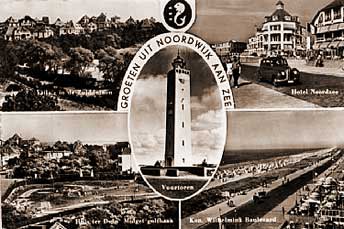
Noordwijk is steeped in history, the essence of which is openness to the outside world and an extensive interchange of people, goods, culture, faiths and beliefs.
A place of pilgrimage
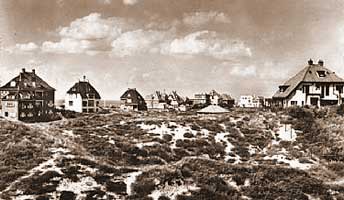
Noordwijk's history dates back to 2000 BC. This is when the first traces of inhabitance were recorded, with the torture of Jeroen the priest in 857. He could have been named as the first priest of Noordwijk. He was a Scottish Benedictine monk originally, and came to Noordwijk in 847 to carry out his mission work and to build a chapel. His life came to an abrupt end when in 857 he was beheaded by ransacking Normans. His name lived on however, as more than a hundred years later in 980 a Roman chapel was built in his honour. This chapel became a true place of pilgrimage. In 1303 a large stone church was built on the site of the chapel, known as the Middle Age gothic Grote of St. Jeroens church. St. Jeroen's skull served as an important relic. Noordwijk quickly became known as a place of pilgrimage, which was officially confirmed by the Bishop of Utrecht in 1429.
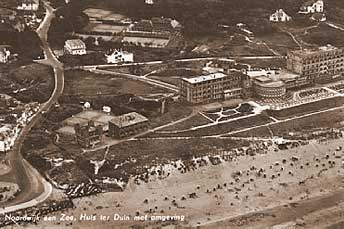
The St. Jeroen's church developed over time into a pilgrim's church, which provided Noordwijk with a considerable income. The 80 years war put an end to this however. Only by paying a substantial sum to William of Orange’s army could the church be saved during the iconoclastic fury of 1566. To be on the safe side however, all Catholic objects were removed from the church; including the most important relic, that of St. Jeroen's skull. Tradition has it that his head lies buried somewhere in the church, but nobody knows exactly where. Towards the end of 1800 a new Roman Catholic church was erected in honour of St. Jeroen. To this day the church's altar houses the skeletal remains of St. Jeroen.
Fishermen
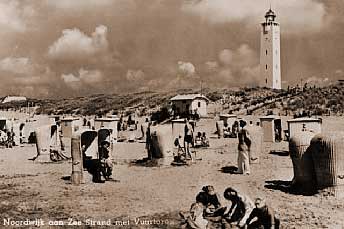
The first inhabitants of Noordwijk were most likely fishermen. The first ‘vierboet’ (elevated fire, on the site of the current Grand Hotel Huis ter Duin) was built in 1444, thus helping the fishermen find their way back to the beach at night. Back in 1474 Noordwijk had an extensive fleet of 38 large & small ships, which left from the beach as there was no harbour. They caught herring, cod, haddock, whiting and plaice. So-called ‘rope yards’ (‘Lijnbanen’) were to hand in Noordwijk-Binnen; these provided the Noordwijk fishermen and trading ships with rope, thus capitalizing on the fishing trade and their source of income even further.
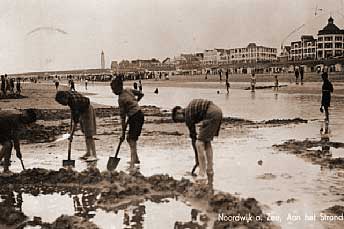
The French occupation between 1795-1813 proved detrimental to the fishing trade. Due to his fear of trade occurring with his enemy - the English - Napoleon laid down stringent limitations on the fishing boats. That was the beginning of the end. As a result the new government laid out new restrictions on the herring fishing trade in Noordwijk and Katwijk between 1818 - 1854. This was to give other fishing towns a chance. After this the Noordwijk and Katwijk fishing trade collapsed even further due to a shortage of seamen and ship owners. In 1868 the fleet amounted to just 16 barges for the herring fishing trade and 2 small boats for the flat fish trade; and in 1913 the last barge went to sea.
City enfranchisement
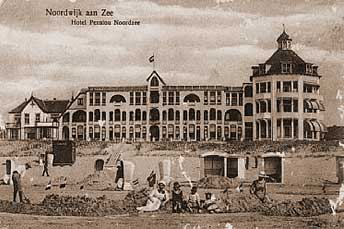
In the Middle Ages Noordwijk was a so-called shire, administered by a group of aldermen and a sheriff. The Count of Holland named the sheriff. The function of sheriff can best be compared to today's mayorial duties. City enfranchisement occurred in 1398 for Noordwijk. The villagers requested these rights, unbeknownst to the nobility - who were not in favour of enfranchisement as it would lessen their authority. In order to be enfranchised a city wall needed to be built, however this never come about. That is why the enfranchisment rights were revoked by Count Albrecht van Beijeren, and Noordwijk remained under the seigneury of the Burgundian and Austrian House.
Noordwijk
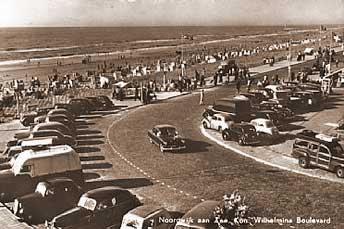
Over time Noordwijk has been known by varying names: Northgo, Nordwige, Nortic, Nortdijc, Northge and Northeke.
‘Zeeër’ or ‘binder’
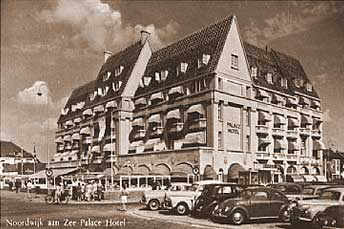
There have always been notable differences between Noordwijk and Noordwijk-Binnen. In days gone by these differences were due to religion and occupations, which were easily upheld as a result of the geographical division. Noordwijk inhabitants were by origin fishermen, with a Protestant-Christian background. The primary occupation within Noordwijk-Binnen was bulb cultivation, with Roman-Catholicism being the predominant faith. During the 80 years war (1568-1648) some 'geuzen' (protestant rebels) came out of Protestant Noordwijk. This area was suffering under the Spaniards, whilst Catholic Noordwijk-Binnen was spared. This discrepancy carried on, and not just in a religious sense. Whilst the ‘zeeër’ (seafarers) fished for a living, the ‘binder’ (binders) were with herb cultivation followed by bulbs later on. Until the start of the twentieth century Noordwijk had a small fleet of barges at its disposal, which departed from the beach as there was no harbour. In the nineteenth century Noordwijk developed into a seaside resort. To this day the notion of being either a seafarer or binder continues, especially among the older generation.
Herb centre>
In the Middle Ages the St. Barbara Convent was located in Noordwijk-Binnen. Herb cultivation began here. During the eighteenth and nineteenth centuries Noordwijk was the primary herb centre in the Netherlands, and as such it was an important source of income for its inhabitants. The herbs were particularly traded in Amsterdam, and eventually used in medicine. Towards the end of the nineteenth century however the herb industry disappeared, due to the rise of chemically prepared medicines.
Bulb exhibitions
Bulb cultivation presented itself as a successor to herb cultivation. From 1880 the number of bulb growers and bulb fields grew, by the end of the nineteenth century, to 250 and 252 hectares respectively. Amongst others, tulips, daffodils and gladioli grew in the fields. Noordwijk earned a reputation for its impressive bulb exhibitions. In 1932 a Flora park was set up within the Offem country estate. Furthermore, Noordwijk entries could be admired at foreign bulb exhibitions. Today the Noordwijk bulb area covers 311 hectares. The majority of bulb fields lie behind the dunes as the sandy soil there is extremely suitable for cultivation. The fields are enclosed by countryside, and each Spring bloom into a colourful carpet of flowers. During Springtime floats decorated with flowers draw the crowds.
Floral seaside resort of Europe
Noordwijk didn’t become a seaside resort until 1866. That was the time of sea-baths and beach stewards when seaside trips were only for the rich elite, as beach outings were very much a chic affair. The sea water was believed to have a cleansing effect. Not long after this, work started on the Grand Hotel Huis ter Duin. However, over time the beach lost its exclusivity. With the arrival of the steam tram a visit to the seaside at Noordwijk became a possibility for many holiday makers. The unique combination of beach and the colourful fields of flowers ensured that Noordwijk blossomed into the 'Floral seaside resort of Europe'.
